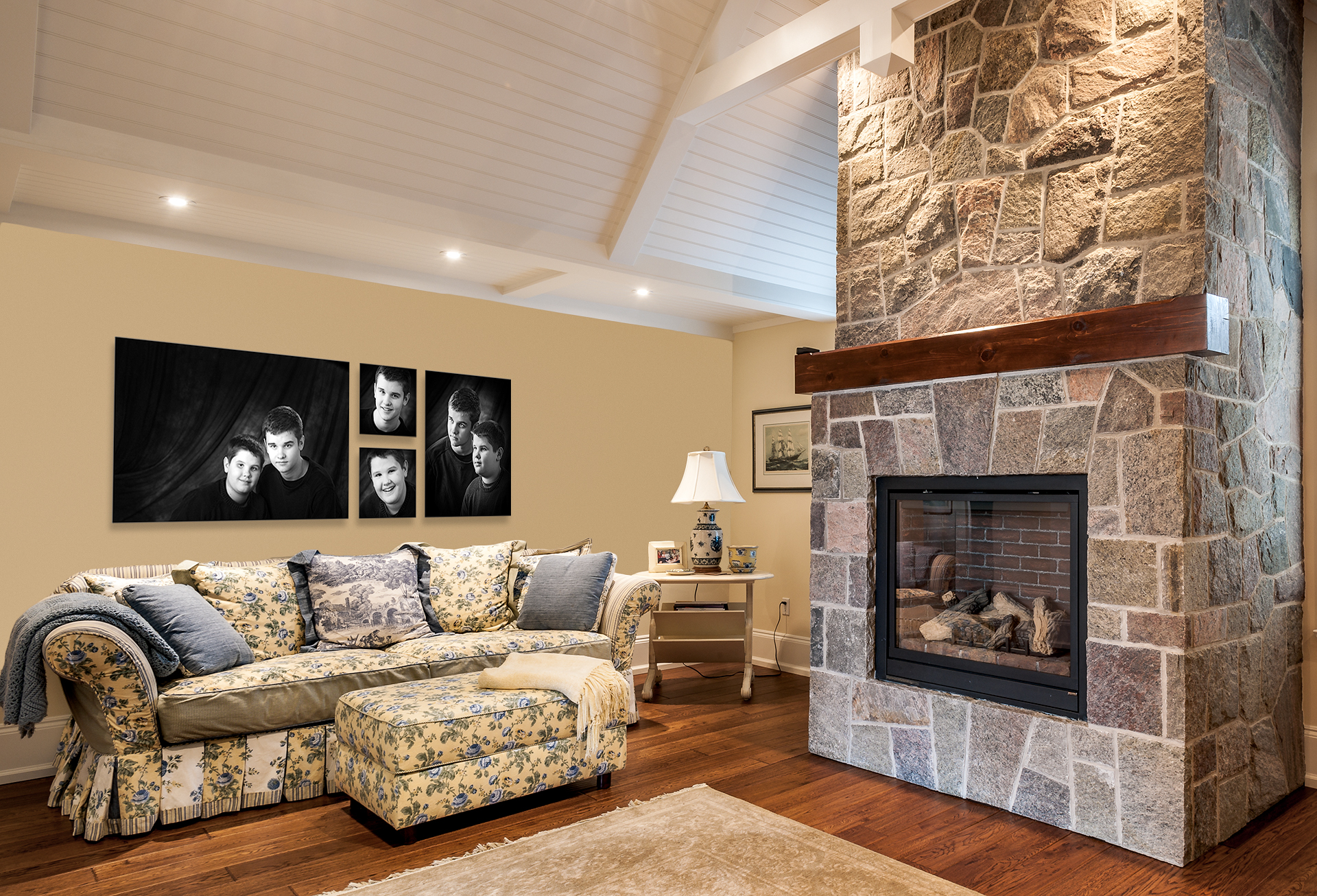Choosing an Appropriate Size
for your Wall Portrait
There are many factors to consider when selecting an appropriate size for your portrait. Some of these include subject size, viewing distance, wall space and furniture, and the overall impact you desire. Let's take these factors one at a time.
Subject Size of the Portrait
By subject size we typically concentrate on the face, or head(s) of the subject(s). First of all, the number of people in the portrait can be a major consideration when selecting an appropriate size. When you have more people in the portrait, you can easily choose a larger size without fear that it will be too large.
Part of this is based on whether the portrait is head & shoulders, half or three-quarter length, or full-length as in an environmental portrait. A tight head & shoulders portrait doesn't need to be as large as a portrait where the subjects are full length or even smaller in the image. The reverse is also true in that an environmental portrait can easily be made larger and be more appropriate to display on a large wall, without the faces overwhelming the space or appearing "larger than life".
A general rule of thumb is that the head size should be no smaller than a fist, but no larger than an open hand.
Viewing Distance
| Size in Inches | Viewing Distance in Feet |
| 8 x 10 | Up to 3' |
| 16 x 20 | 6' |
| 20 x 24 | 8' |
| 24 x 30 | 9' |
| 30 x 40 | 12'. |
| 36 x 54 | 16'. |
When you place a portrait on a desk or night stand, you don't need a large portrait because you will be viewing that portrait from a short distance away, seated at your desk, for example. This is most suitable for portraits of individuals or couples. A large family, however, or four, five or more people would be awfully small as a desktop portrait forcing you to pick it up and hold it closer to appreciate.
The same principle applies to wall portraits. Considering where the portrait will be displayed, also consider the head sizes of the subjects. At a comfortable viewing distance, will you be able to easily distinguish facial features?
Another rule of thumb is that the appropriate viewing distance for a portrait is approximately two to four times the diagonal of the print. We like to use three times the diagonal. For example, a 24 x 16" portrait has a diagonal of about 29 inches, so the ideal viewing distance is 3 x 29" or up to 7 feet. The above chart shows the maximum viewing distance of some common size prints. You can also use this calculator to determine the diagonal of a print to determine this for yourself.
Think about where you'd like to place the portrait, and then where you would typically be enjoying the view of the portrait from. If that distance is ten feet away, then an appropriate size would be 24 x 30" or 30 x 40". If you're placing the portrait on a wall going up a set of stairs, you'll only be a few feet away at the most, and a smaller portrait may be more appropriate. Of course, we can take the Head Size into consideration as well and adjust from there.
Wall Space
Wall space is also something to consider. Let's take a partial wall for example, maybe only 30 inches wide. A good size for this wall would be a print that is between 50% and 75% of that space, so a width of 15 inches to 20 inches would be ideal. A wall that is 12 feet wide could easily accommodate a print 6 to 8 feet in length. And if you're placing the print over a piece of furniture, you generally don't want to go over the length of that piece. Many people will match the width of the print to the width of the furniture piece.
Another option when selecting portrait sizes to fill a large wall space, is to create a collection of prints as the example images on this page. We call these our "Master Wall Collections" and consist of a number of prints arranged and sized to fill a particular space. You can find more information about our Wall Collections here.
No Wall Space?
If wall space is at a premium, you may also consider placing the largest print on an easel. The easel can be placed in a corner or beside other furniture. Smaller easels are also great for displaying prints on mantles or side-tables.

